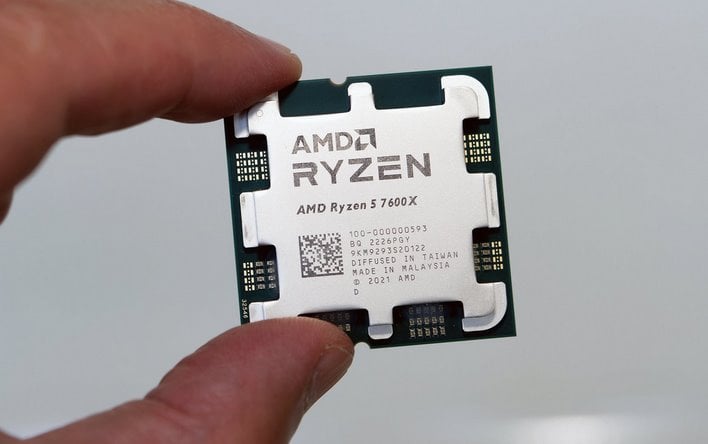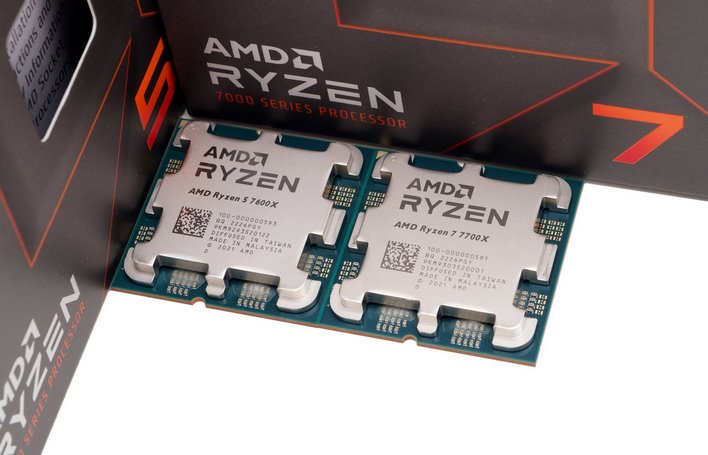AMD Ryzen 5 7600X And Ryzen 7 7700X Review: Mainstream Zen 4 Tested
AMD Ryzen 5 7600X And Ryzen 7 7700X: Gaming, Power And The Verdict
For our next series of tests, we moved on to some graphics and game-related metrics with 3DMark, specifically the physics benchmark that's part of the Time Spy test, along with a handful of actual games. For the 3DMark Physics test, we simply create a custom 3DMark run consisting solely of the physics test, which is multi-threaded and CPU dependent, and report the results...
UL 3DMark CPU Physics Benchmark
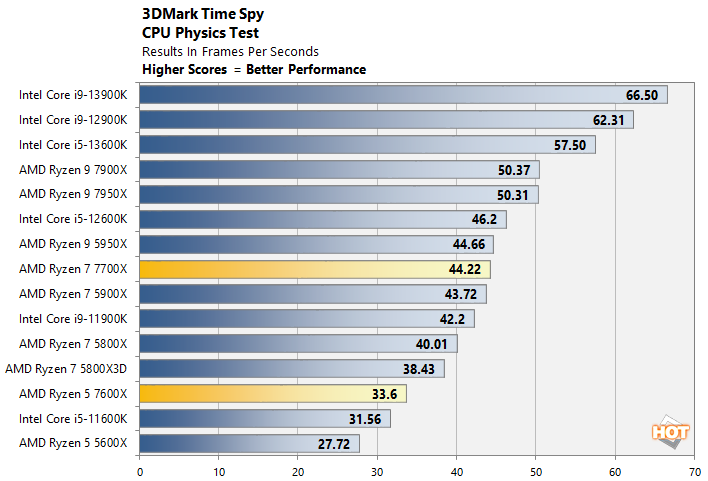
This test is a little bit academic, because there are very few (if any) games that use multi-threaded physics in the way that this test simulates. It will scale to high numbers of cores, and like the rest of 3DMark, it favors Intel. AMD's CPUs underperform in this benchmark compared to their real game performance, so the relatively weak showing here isn't surprising.
High And Low Resolution Gaming & Graphics Benchmarks
We also ran some mid and high-resolution game and graphics tests on our test rigs with 3DMark, F1 2021, Metro Exodus, Middle-earth: Shadow Of War and Shadow Of The Tomb Raider. We used 3DMark's default Time Spy preset, and the games were run in two different configurations -- either 1080p with Medium/High details, or 4K with High/Extreme details. The lower resolution tests are more CPU bound to somewhat isolate processor performance, while the higher resolution tests are more GPU bound.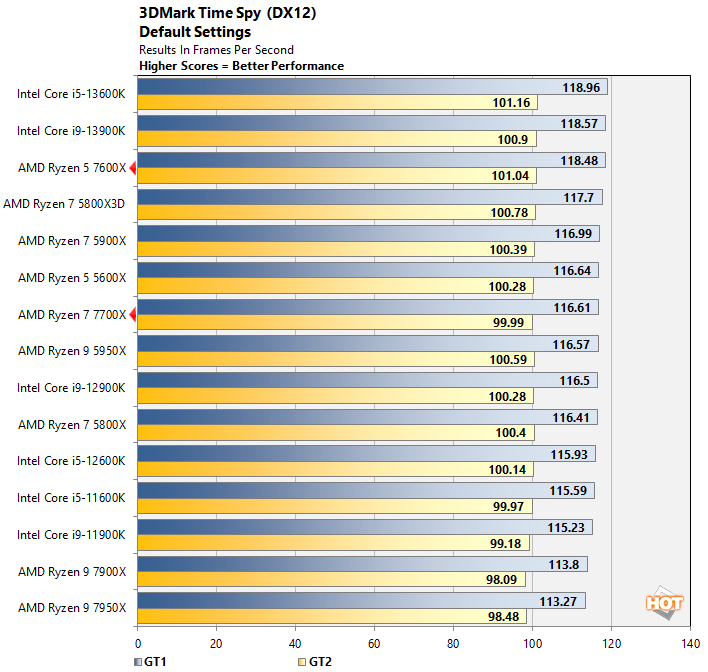

As all of these systems were tested using the same GeForce RTX 3080 GPU, the graphics score is relatively static, and the overall 3DMark score includes the purely synthetic CPU physics test we described earlier. As a result, the Intel platforms and higher-core-count CPUs roundly outperform our little six- and eight-core AMD chips here. If you're hunting for 3DMark world records, better stick to an Intel CPU.
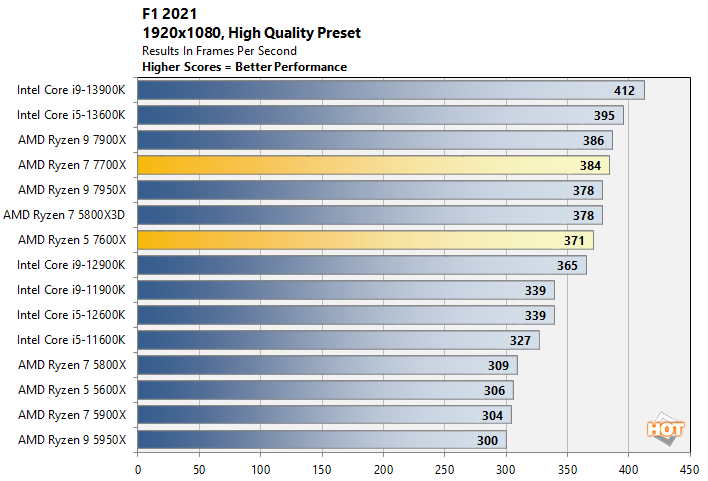
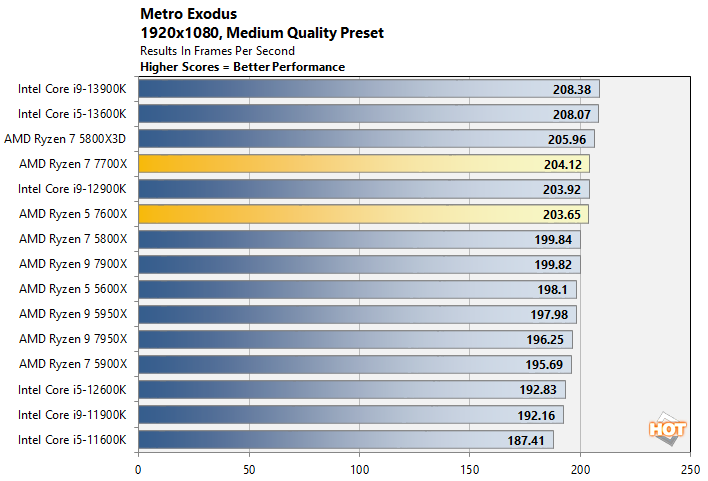
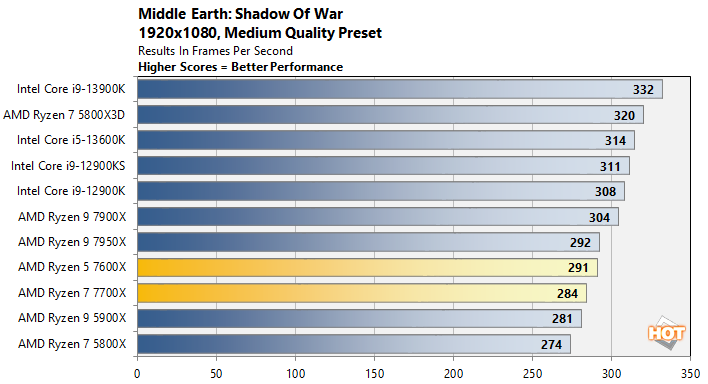
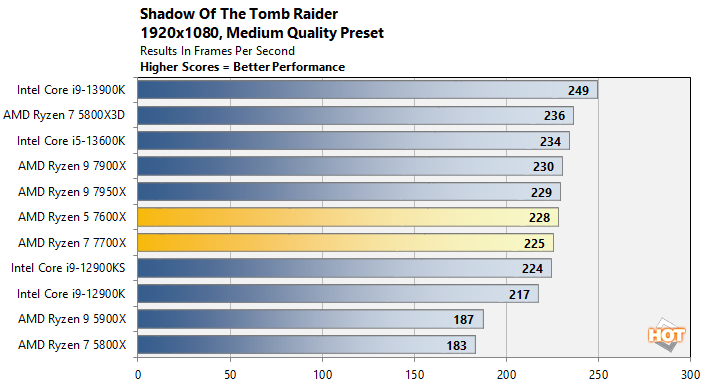


AMD Ryzen 5/7 7000 Total System Power Consumption
Throughout all of our benchmarking and testing, we also monitored how much power our systems rig were consuming with a power meter. Our goal was to give you an idea as to how much power each configuration used while idling at the Windows desktop and while under taxing CPU workloads across one or all cores.
Keep in mind, this is total system power consumption being measured at the outlet and not the the individual power being drawn by the CPUs alone; our GeForce RTX 3080 and other system components are factored into these numbers.
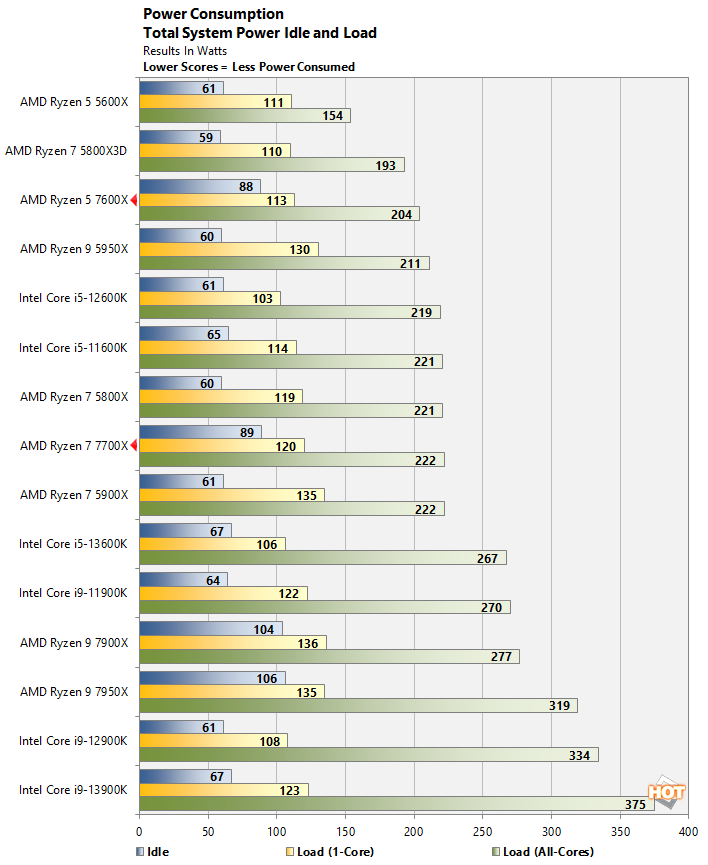
The power consumption for new processor releases is trending upward and AMD's Zen 4 CPUs are no exception. While they deliver excellent single- and multi-core performance, they also consume a fair amount of power to do so, at least as configured by AMD. Overclockers have shown that you can shed quite a lot of power while losing very little performance with some tweaking and undervolting, but that's not how AMD ships them from the factory, and most users aren't going to fiddle with their settings to save a few watts.
That's a shame, too, because arguably the most important power spec for a CPU is the idle power, and these chips are quite thirsty at idle. Whether it's the processors themselves or the ultra-high-end X670E motherboard we're using, we can't say definitively just yet, but the Socket AM5 systems based on the X670E regularly draw 30 to 40 watts more than any other platform at idle. Hopefully AMD can tame this situation somewhat with firmware updates, because it doesn't look great, though mainstream chipsets should help because, unlike the X670E, they consist of only a single IC -- the X670E uses two.
AMD Ryzen 5 7600X And Ryzen 7 7700X - The Verdict
AMD's higher-end Socket AM5 processors, the Ryzen 9 7900X and especially the Ryzen 9 7950X, make the argument for themselves rather well. With outstanding single- and multi-core performance, you can't go wrong. You get the newest platform with all the latest technologies, and at least two years of viable CPU upgrades on Socket AM5, with perhaps more to come after.
The mid-range processors we're reviewing today don't sell themselves in quite the same way. The Ryzen 7 7700X and Ryzen 5 7600X have the same strong single-core performance and high-tech platform, but with only a single CCD, they obviously have fewer cores and thus lower multi-threaded performance. That's fine, if you're a gamer or otherwise someone who won't benefit from having a double-digit number of CPU cores, and in a vacuum, we'd recommend these CPUs emphatically to everyone.
These chips don't exist in a vacuum, though. You can have your cake and eat it too with Intel's latest CPUs. AMD competes well on the high end, but in this mid-range territory, the blue team's 13th-gen Core CPUs offer similar or better single-threaded and multi-threaded performance, with likewise similar power consumption, at lower prices—and that's just talking about the CPU.
While motherboards for either platform can be disappointingly-expensive, these AMD CPUs mandate DDR5 memory, where with Raptor Lake, you can use cheaper DDR4 memory. This could hurt performance in production workloads, but for typical client usage and games, it won't matter much at all.
That's not to say that AMD's chips don't have any advantages. There are features like AVX-512 and USB 4, but certainly the biggest mark in favor of AMD is the aforementioned upgrade path. An Intel Raptor Lake purchase is decidedly a dead-end decision, where AMD has at least a couple of years to go with Socket AM5.
Besides future generations of CPUs, there are the 3D V-Cache equipped Zen 4 CPUs on the horizon, which we expect will likely capture the gaming performance crown rather decisively given how well the Ryzen 7 5800X3D is still doing. In fact, that idea alone might be enticing enough to give gamers pause before upgrading. AMD is rumored to be announcing Zen 4 chips with 3D V-Cache at CES 2023, with a release later in Q1.
If that's the case, a lot of folks limping along on older systems might just hold off on an upgrade a bit longer, and we wouldn't blame them. Then again, the Ryzen 5 7600X ranks real high on most of our game benchmarks, and it's just $250 at the moment. You could always set yourself up with an upgrade, then shift the six-core CPU to another system when the X3D models come out...


